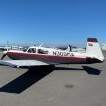Localizer HILPT with GPS?
-
Members Online
- dzeleski
- 1967 427
- Rmnpilot
- LANCECASPER
- toto
- richardbrochu27
- Vance Harral
- Buckeyechuck
- saltydecimator
- Flyler
- Jake@BevanAviation
- Planegary
- Jakes Simmons
- M20S Driver
- AdamJD
- bhtitle
- hbpil
- Parker_Woodruff
- ta2too
- prillayo03
- squeaky.stow
- midlifeflyer
- Lincoln
- Brandt
- Bpvlbv
- jsimmons619
- hubcap
- phrogpilot73
- ReboTim
- Scott Ashton


Recommended Posts
Join the conversation
You can post now and register later. If you have an account, sign in now to post with your account.